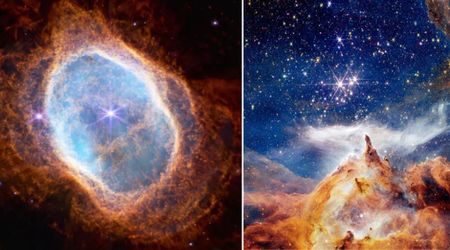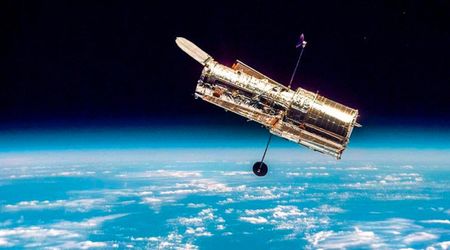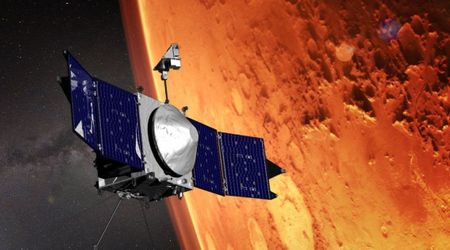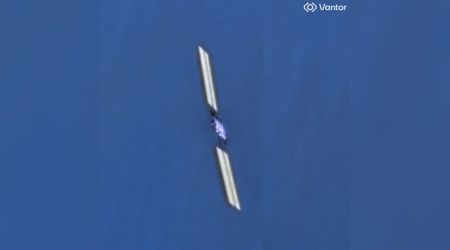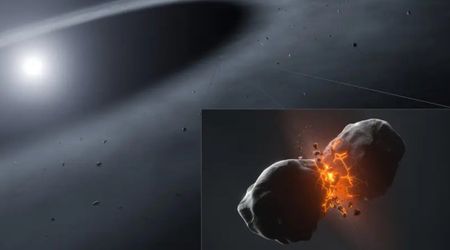Telescope Magnification

The magnification power of a telescope essentially indicates the size of an object observed inside the eyepiece relative to the size of that object when observed with the naked eye. For example, when observing Mars at 50x magnification, the red planet will appear 50 times larger than if you looked at it with your eyes.
So why is the magnification power of a telescope important for stargazing?

Well... all planets, galaxies, nebulae and stars require different telescopes adjustments to be observed under the best conditions. By controlling and mastering the magnification power of your telescope, you will benefit from greater flexibility as an amateur astronomer. Ultimately, this is one of the few settings that you can manually adjust on your telescope to obtain better images. Let's find out how!
Practical Limits: Lowest & Highest Magnification
A common mistake made by people buying a telescope for the first time is to assume that since the planets and galaxies are really far away, they would naturally have to be magnified as much as possible to get a clear view.
Like everything in astronomy, it is not that simple.
There are many factors that can greatly affect the performance of your telescope's magnification power, such as viewing conditions: light pollution, atmospheric turbulence, temperature, wind, and much more. But the most important factors to keep in mind are the lowest and highest useful magnification of your telescope.
Higher magnification means that you zoom in on your target, getting closer and narrowing the field of view, like a horse with blinders on. It also means that the atmospheric turbulence that may interfere with the light coming from the celestial object you are looking at will be more visible: the planet will appear dim and blurred. For example, if you look at Saturn at 250x when the viewing conditions are bad, the view will be very unstable, shaky and the image will be fuzzy. By reducing the magnification, you will stabilize the view and the image will be a little clearer and brighter.

Adjusting your magnification according to your telescope and viewing conditions can have a significant impact on your planetary observations.
How to Calculate The Magnification Power of Your Telescope
The first thing to know is that the magnifying power of a telescope is limited by the amount of light that the telescope aperture can collects. The two other important values for accurately calculating the magnification are the focal length of your telescope and the focal length of the eyepiece. These two values are indicated on a label placed on both items. The magnification formula is quite simple:
The telescope FL divided by the eyepiece FL = magnification power
Example: Your telescope FL is 1000 mm and your eyepiece FL is 20 mm. 1000/20= 50x! The image seen in your eyepiece is magnified 50 times!
Being able to quickly calculate the magnification is ideal because it gives you a more:
- Flexibility, because each celestial object has a different brightness (magnitude) and you may want to quickly increase or decrease the magnification when changing targets.
- Responsiveness, because the weather conditions can greatly affect your viewing and you want to be able to adjust your magnification quickly and accordingly.
Note: The focal length of your telescope is a fixed value that cannot be changed, so the only way to increase or decrease the magnification is to change the eyepiece or Barlow lens.
Lowest Useful Magnification: You can calculate your telescope lowest magnification by multiplying your aperture (in inches) by 3 or 4 times. For a 4-inch telescope, the minimum useful magnification is between 12x and 16x. At this power, you will have a wider field of view (FOV) and a brighter image, which is ideal for large celestial objects such as galaxies and nebulae.
Highest Useful Magnification: Calculating the maximum useful magnification of your telescope is quite simple. If you work in inches, you multiply this value by 50. So, for an 8-inch telescope, the maximum magnification you can use is x400. If you exceed this value, you will get an overly magnified image.
MAGNIFICATION COMPARISON (PLANETS)
Swipe to increase magnification



Telescope Magnification Chart
Increasing your magnification does not mean you are increasing the amount of light your telescope receives. In fact, a high magnification means that the light is spread over a larger area of your retina to make the image appear larger, but this results in a loss of brightness. As a rule of thumb, doubling the magnification reduces the brightness of the image seen through your eyepiece by a factor of four.
Ultimately, every telescope is different and it is best to try different levels of magnification on a given target to find out what works best for your telescope. Personally, I have created a telescope magnification chart that gives me an idea of what magnification has worked well for me in the past for a given telescope. It looks like this:
| Target | Poor Seeing | Good Seeing | Excellent Seeing |
|---|---|---|---|
| JUPITER | 75x | 125x | 200x |
| SATURN | 60x | 100x | 175x |
| MARS | 80x | 150x | 200x |
| ANDROMEDA | 60x | 80x | 100x |
Note: The seeing is a measure of the stability of the atmosphere above you. A turbulent atmosphere leads to poor seeing.
I was too obsessed with magnification when I first started using a telescope, but what matters most is the field of view, especially for large deep-sky objects like the Andromeda galaxy.
In the end, my advice would be not to think too much about numbers, but to practice and play with your equipment. The knowledge and mathematics behind your telescope will become second nature over time.
Frequently Asked Questions
What magnification do you need to see planets?
When it comes to planetary observations, the state of the atmosphere above you can greatly affect your viewing conditions. A steady air means you can push to 200 / 250x magnification but a turbulent atmosphere might set you back to 150x or less.
What is the best magnification for a telescope?
The best magnification to use for your telescope depends on the brightness and the size object you are trying to observe. At a minimum, its value will be around 4 times the size of your aperture in inches and at a maximum, 50 times your aperture.
Recommended Reading
How to choose and buy your first telescope
We have compiled a list of the most important things to know and do before buying your first telescope.
